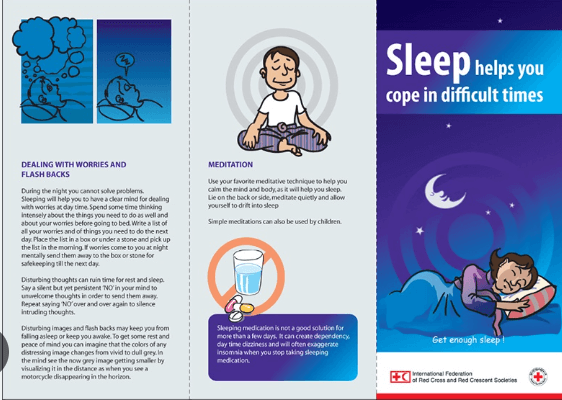Introduction
Facing failure can be a daunting experience, often leaving individuals pondering how to sleep at night amidst the weight of perceived shortcomings. This article explores the intricate relationship between failure and sleep, offering insights into understanding, coping, and ultimately finding peace despite setbacks.
II. Understanding Failure
A Normal Part of the Human Experience
Failure is an inevitable aspect of life, and acknowledging it as a normal part of the human experience is the first step toward embracing a healthier perspective. The fear of failure can be overwhelming, but recognizing that everyone encounters setbacks allows for a more compassionate self-view.
The Importance of Reframing Failure
Reframing failure from a negative outcome to a learning opportunity is crucial. Instead of seeing failure as an endpoint, view it as a stepping stone towards personal and professional growth. This shift in mindset lays the foundation for a more positive and constructive approach to challenges.
III. Coping Mechanisms
Embracing Self-Compassion
In the face of failure, self-compassion becomes a powerful coping mechanism. Treating oneself with the same kindness and understanding as one would offer a friend fosters resilience and helps mitigate the negative impact of setbacks on overall well-being.
Learning from Failure for Personal Growth
Every failure holds valuable lessons. Rather than dwelling on the disappointment, channel energy into understanding what went wrong and how it can contribute to personal and professional development. This proactive approach transforms failure into a catalyst for growth.
IV. The Role of Perspective
Shifting Focus from Failure to Progress
Redirecting attention from failure to progress is a transformative shift in perspective. Celebrate small victories and advancements, no matter how minor, to create a positive momentum that counterbalances the weight of setbacks.
Finding Silver Linings in Setbacks
Even in the midst of failure, there are often silver linings. Whether it’s newfound resilience, strengthened determination, or unexpected opportunities, identifying positive aspects in setbacks contributes to a more optimistic outlook.
V. Managing Stress and Anxiety
The Connection Between Failure and Stress
Failure can significantly contribute to stress and anxiety. Recognizing this connection allows for targeted strategies to manage stress levels and prevent a negative impact on sleep quality.
Strategies for Relaxation and Stress Reduction
Incorporating relaxation techniques into daily life, such as deep breathing, meditation, or engaging in activities that bring joy, can effectively reduce stress. Prioritizing mental well-being is crucial in navigating the challenges of failure.
VI. Building Resilience
Cultivating Resilience in the Face of Failure
Building resilience involves developing the ability to bounce back from adversity. Cultivate resilience by focusing on personal strengths, fostering a positive mindset, and maintaining a forward-looking perspective.
Developing a Positive Mindset
A positive mindset acts as a shield against the detrimental effects of failure. Train the mind to see challenges as opportunities and setbacks as temporary roadblocks on the journey toward success.
VII. Sleep Hygiene
The Impact of Failure on Sleep Quality
The emotional toll of failure can disrupt sleep patterns, leading to insomnia or restless nights. Understanding the connection between failure and sleep quality is crucial in implementing effective sleep hygiene practices.
Establishing Healthy Sleep Habits
Creating a conducive sleep environment, practicing a consistent bedtime routine, and limiting exposure to screens before sleep are essential components of establishing healthy sleep habits. Prioritizing sleep contributes to overall well-being.
VIII. Seeking Support
The Importance of a Support System
During challenging times, having a support system is invaluable. Share feelings of failure with trusted friends or family members, as their perspective and encouragement can provide comfort and reassurance.
Talking About Failure with Friends and Family
Open communication about failure fosters connection and reduces the burden of isolation. Friends and family can offer valuable insights, encouragement, and sometimes a different perspective on the situation.
IX. Embracing Imperfection
Letting Go of Perfectionism
Perfectionism often magnifies the impact of failure. Embrace imperfection as a natural part of the human experience, understanding that setbacks do not define personal worth or potential.
Accepting the Journey, Including Failures
Life is a journey filled with highs and lows. Accepting failures as integral parts of this journey allows for a more balanced and compassionate view of personal and professional endeavors.
X. Learning from Mistakes
The Educational Value of Mistakes
Mistakes, including failures, are valuable sources of education. Each misstep provides an opportunity to learn, adapt, and refine strategies for future endeavors.
Turning Failures into Stepping Stones for Success
Rather than viewing failure as a roadblock, transform it into a stepping stone for future success. Apply lessons learned to navigate future challenges with resilience and determination.
XI. Celebrating Small Wins
Recognizing and Appreciating Small Achievements
Celebrating small wins contributes to a positive mindset. Recognize and appreciate even the smallest achievements, as they collectively contribute to a sense of progress and accomplishment.
Balancing the Scale of Success and Failure
Maintain a balanced perspective on success and failure. Each success and failure is a piece of a larger puzzle. Finding equilibrium ensures that setbacks do not overshadow achievements.
XII. The Nighttime Routine
Creating a Soothing Bedtime Routine
A soothing bedtime routine signals to the body that it’s time to unwind. Activities such as reading, gentle stretches, or listening to calming music can contribute to a peaceful transition to sleep.
Disconnecting from Stress Before Bedtime
Limit exposure to stress-inducing stimuli before bedtime. Avoid engaging in work-related activities or discussions about failures in the hours leading up to sleep to promote relaxation.
XIII. The Impact of a Positive Mindset
Optimism as a Tool for Resilience
Maintaining optimism acts as a powerful tool for resilience. A positive mindset not only fosters a sense of hope but also enhances overall well-being.
Shifting from Self-Criticism to Self-Improvement
Replace self-criticism with a mindset of self-improvement. Use setbacks as opportunities for growth, continuously striving to become the best version of oneself.
XIV. Conclusion
Navigating the complexities of failure and its impact on sleep requires a multifaceted approach. By understanding failure, embracing coping mechanisms, and prioritizing well-being, individuals can find comfort in peaceful nights despite the challenges they face.





